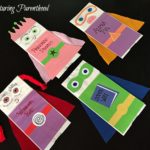I’m always on the lookout for new and exciting ways to color Easter eggs! Last year, we dyed Easter Eggs Two Ways. First, we used the rice method, which provided a whole lot of shaking fun (and produced dazzling speckled eggs). Then we made some marvelous marbled eggs (using Cool Whip and food coloring). Both of these egg-dying methods resulted in beautiful Easter eggs, but this year we wanted to try something completely different…so, we stepped up our game and created these bright and beautiful Rubber Cement Easter Eggs!
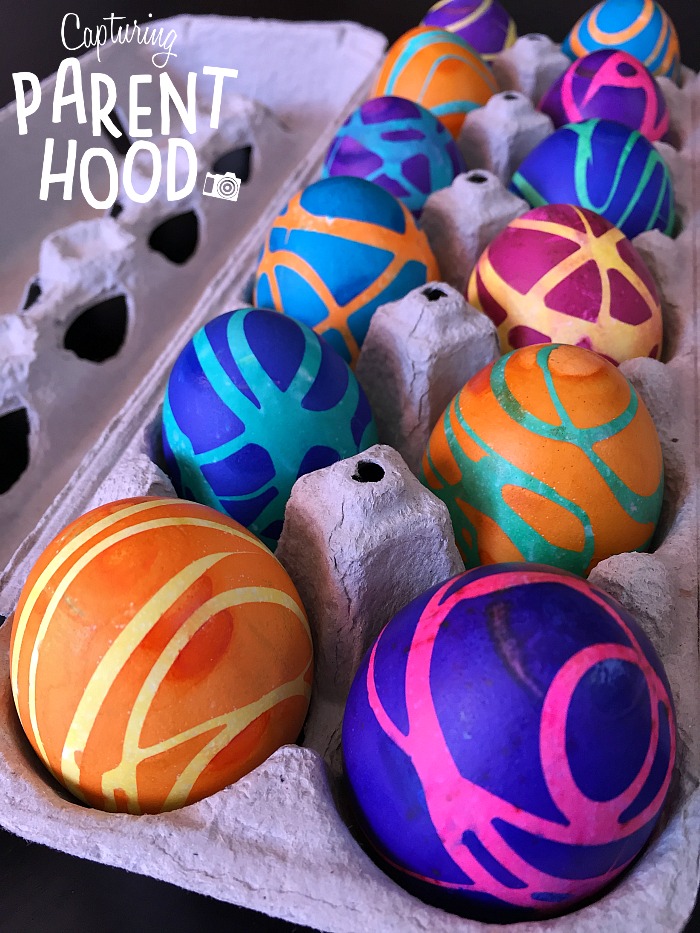
I’m over the moon about these rubber cement eggs! They are hands down the most beautifully-colored Easter eggs that I’ve ever helped create! I just can’t get over the gorgeous contrast in colors, and the magical swirly designs. I could just sit and stare at them all day long.
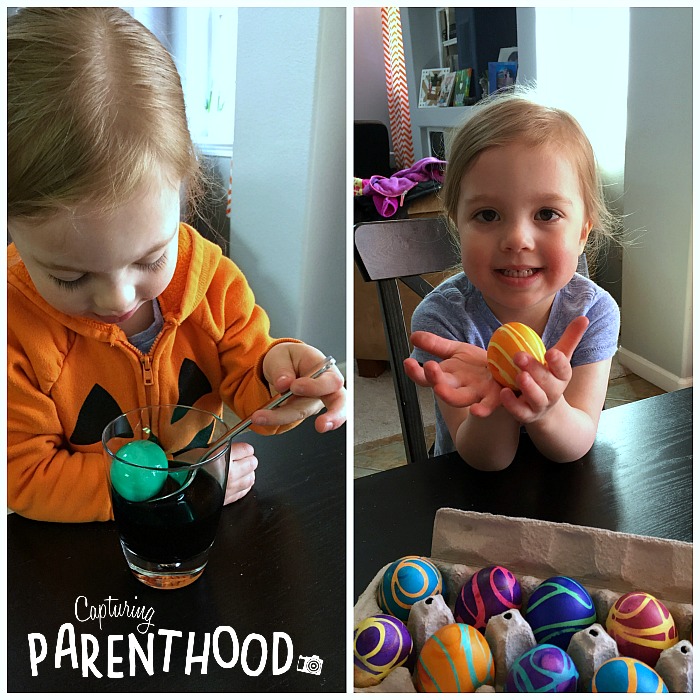
I stumbled across this brilliant Rubber Cement Easter Egg Technique over on Unsophisticook. Tara made her eggs using blown out egg shells. Since our little nugget was helping out with the egg-dying process, we made sure to use regular hard-boiled eggs. Toddler hands and delicate egg shells don’t strike me as a great combination…at least not with my toddler. I don’t even trust my own fumbling hands to dye empty egg shells. 🙂 Needless to say, if you want to make these beautiful eggs using blown out egg shells, follow the link above to find Tara’s instructions.
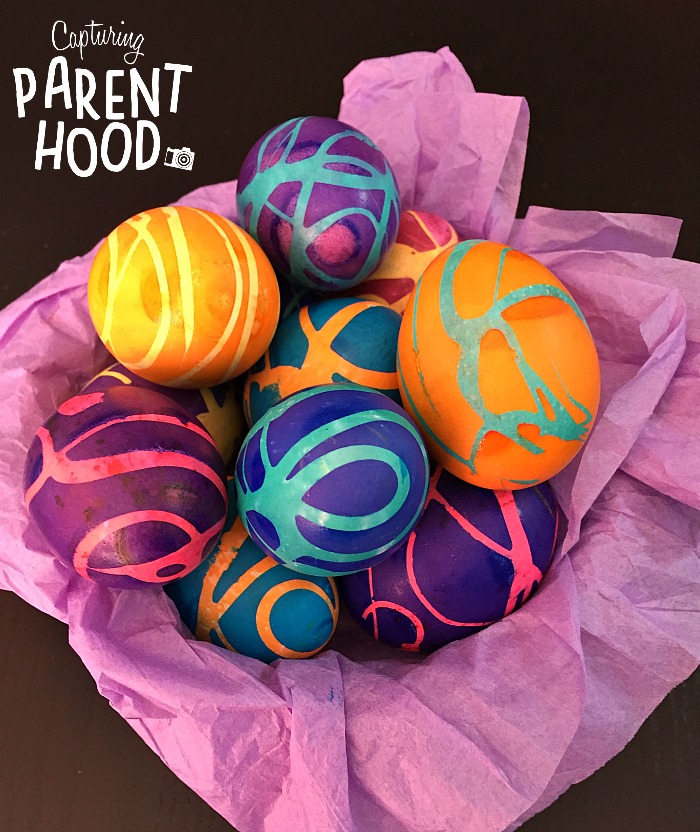
If you are dying eggs with little ones (like me) and want to use hard-boiled eggs, I have one word of warning…DO NOT CONSUME THE HARD-BOILED EGGS ONCE THEY HAVE BEEN DYED. Eggshells are a semi-permeable membrane, which means that air and moisture can pass through them (thus the reason baby chicks can breathe and survive inside of them). Rubber cement is not food-safe and should not be ingested. So, please do not eat the eggs.
On another note…this rubber cement technique is a lengthier egg-dying process than most. It involves two separate rounds of color dying (though you can try even more), and requires ample time for the eggs to dry. I would set aside a couple of hours (total), especially if you are working with young children.
Rubber Cement Easter Eggs
Supplies:
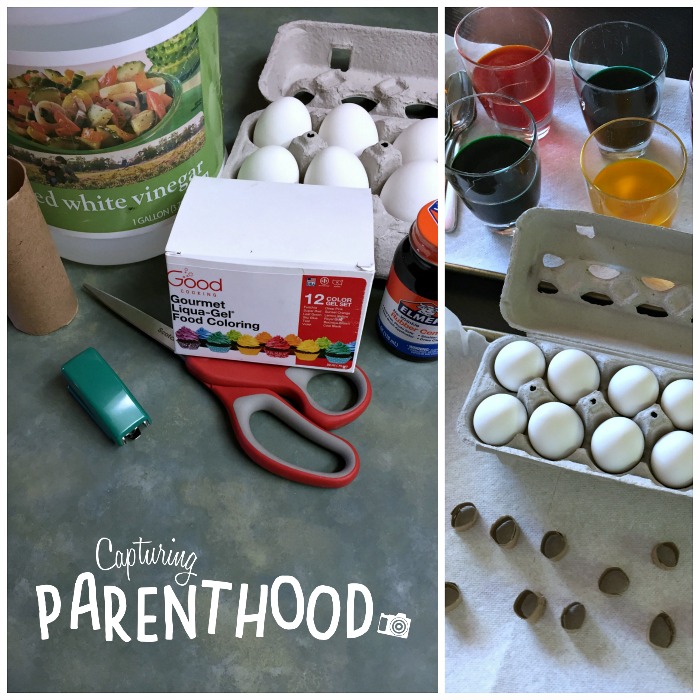
- White Eggs, Hard-boiled and Cooled
- Gel Food Coloring
- White Vinegar
- Hot Water
- Rubber Cement
- Empty Toilet Paper Tube
- Scissors
- Stapler/Tape
- Spoons/Whisk
- Tongs (highly recommended)
Instructions:
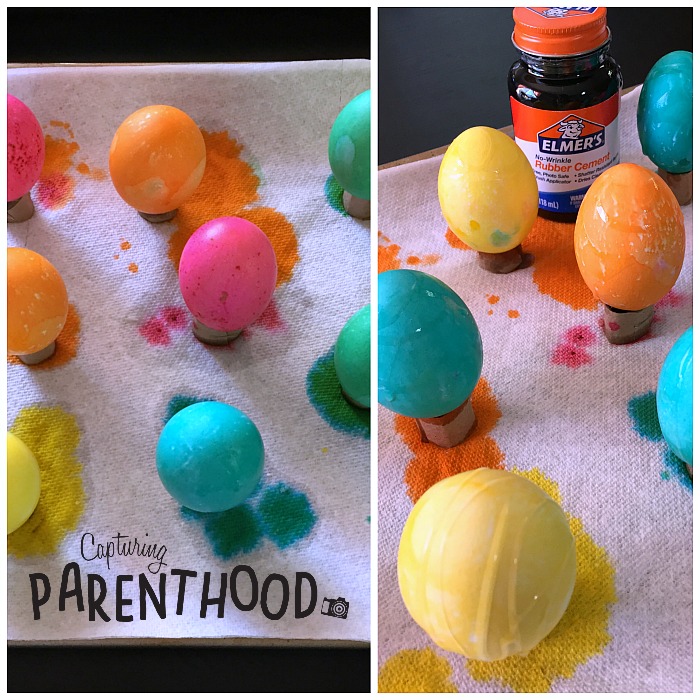
- Start by making your little egg-drying racks. I got this idea from Tara as well, and it’s brilliant! We dyed a dozen eggs, so I cut our empty toilet paper tube in half lengthwise, and then cut 6 strips from each half, for a total of 12 strips. Roll each strip into a small circle and secure with a staple, or some tape. Set aside (preferably on a cookie sheet or tray…it will help contain any mess).
- Mix your first-round of colors. You want the first round of colors to be lighter in hue (keeping in mind that this has more to do with the length of time that you leave the eggs in the dye, and less to do with the color of dye itself). For our first round, we chose 5 colors (lemon yellow, sunset orange, leaf green, deep pink, and teal green). To make each color, add 1/2 cup of hot water to a small cup or glass. Add 1 teaspoon of white vinegar, and then 1 teaspoon of gel food coloring. Stir to combine.
- Dye your eggs! We used spoons to slowly drop our eggs into the glass (although you can also use the wire whisk technique for the little ones). Again, keep in mind that you want the colors of these eggs to be lighter, which means you want to keep them in the dye for a shorter period of time. I also highly recommend using a set of tongs to remove each egg from the glass, and carefully place it upright on one of the egg-drying racks. This takes a little patience and practice, but you will get the hang of it. 🙂
- Once all of your eggs have been dyed, leave them to dry completely.
- When the initial colors are dry, it’s time to add the rubber cement. This is something that you (the adult) will likely want to take care of yourself. I found that it was easiest to hold the eggs upright (thumb on one side, finger on the other). With your other hand, dip the wand into the rubber cement, and then swirl the rubber cement around the egg (in any design you desire). Get creative!
- Once again, you will need to set the eggs on their racks to dry completely, before moving on to the next stage of egg-dying. It will take the rubber cement approximately 15-20 minutes to dry completely. Keep in mind that it will still be sticky to the touch.
- Then, it’s time for the final color bath! Mix up another batch of colors. For our second round, we used royal blue, violet, sunset orange, fuchsia, and sky blue. You want these colors to be darker, so you will want to leave them in the dye longer this time. When you are satisfied with the colors, carefully remove them (with the tongs) and place them back on the drying racks, to dry completely.
- Once the eggs are thoroughly dry, gently rub your fingers over the outside of each egg, to remove the rubber cement…revealing the initial egg color beneath!
- Ta Da! Now you can sit and oooohhh and aaaahhhh over your beautifully unique Easter eggs!
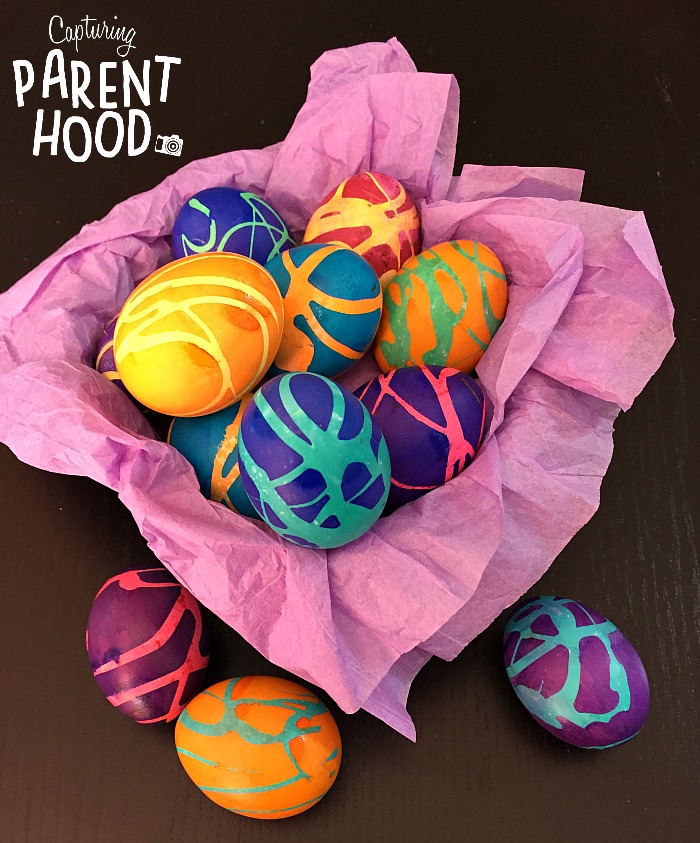
As I said at the beginning of this post, I’m always looking for new and exciting ways to color Easter eggs, but after using this rubber cement technique…I’m in love! This might be our go-to Easter egg method for years to come. Ok. Ok. I’m sure I will discover a few other ideas that I will want to try in the future, but I can say (with 100% honesty) that we will make Rubber Cement Easter Eggs again!
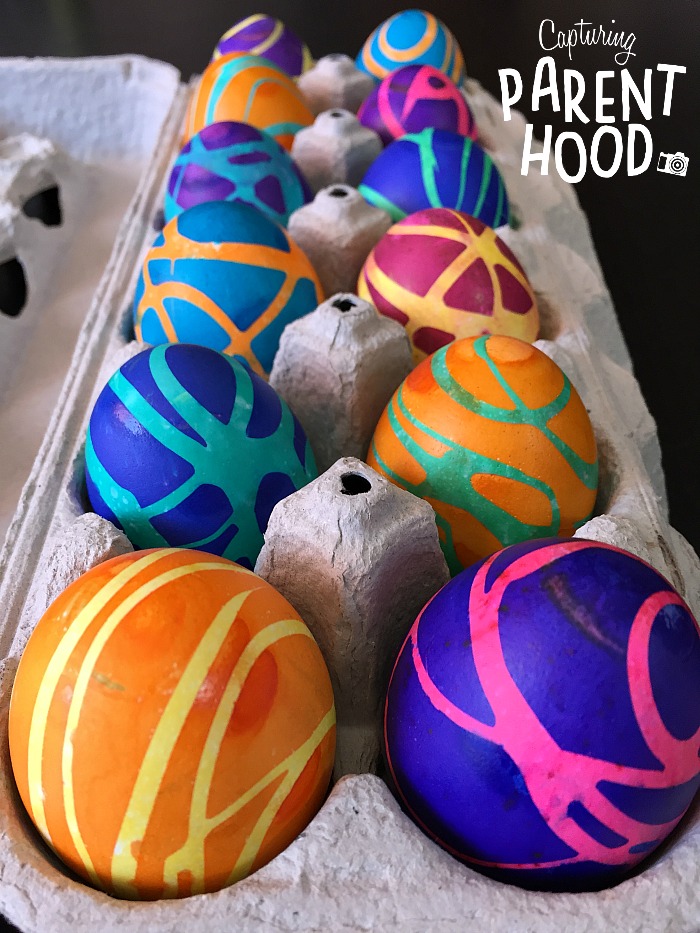
What are your favorite Easter egg dying methods? How do your kiddos prefer to color/decorate Easter eggs? I would love to hear all about your favorite egg-dying experiences, in the comments below. 🙂
HAPPY EASTER!


